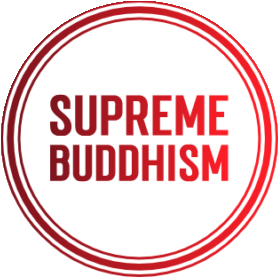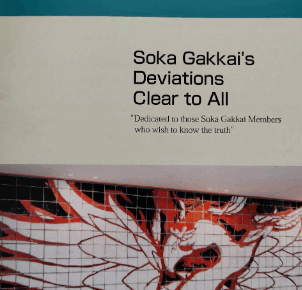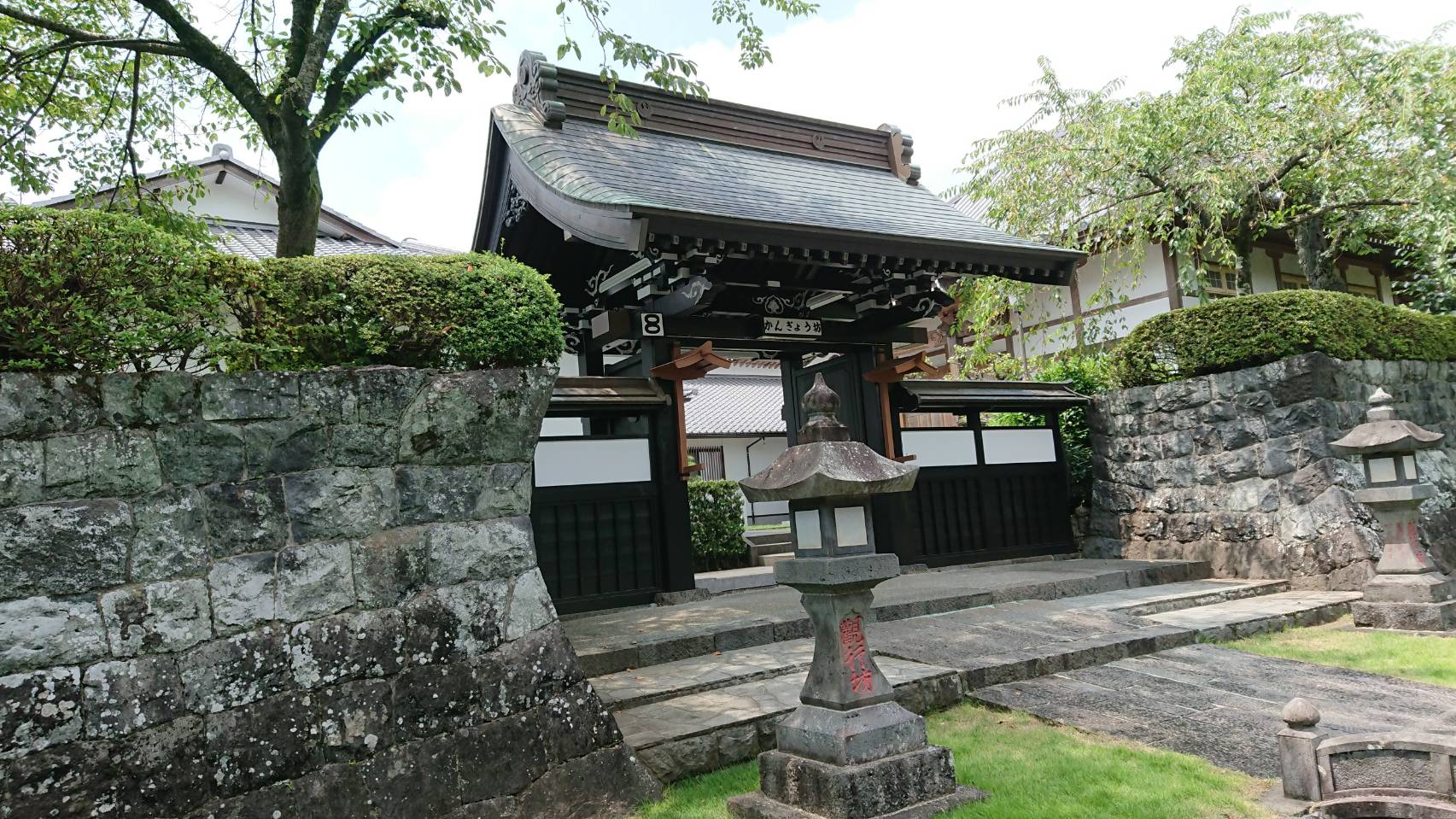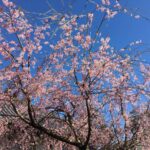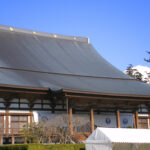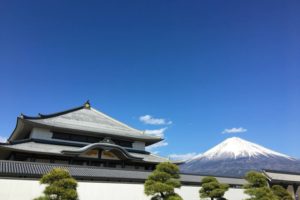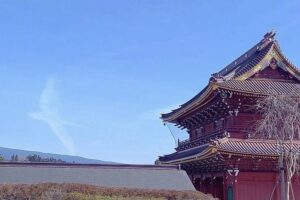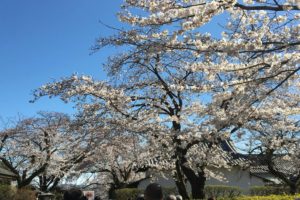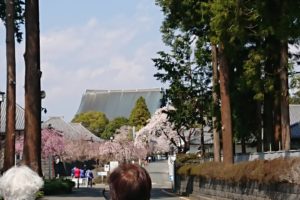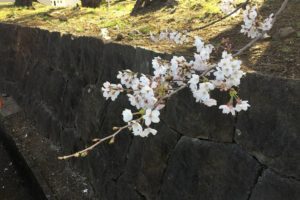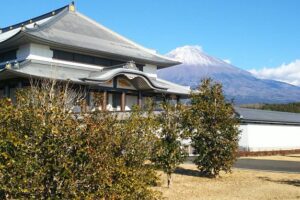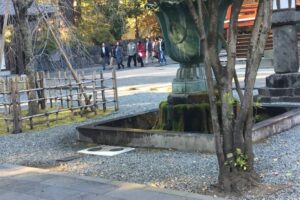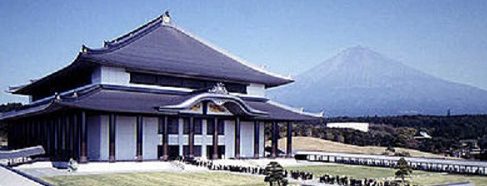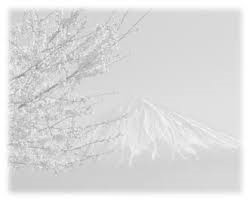Contents
- 1.The Writing of “The Opening of the Eyes”
- 2. The Title and General Significance of “The Opening” of the Eyes Kaimoku sho)
- 3. The Fivefold Comparison (Goju no sotai)
- 4 The Three Virtues of Sovereign, Teacher and Parent (Shu shi shin no santoku)
- 5. The Votary of the Lotus Sutra
- 6. Instruction to the Disciples and Followers
1.The Writing of “The Opening of the Eyes”
Nichikan Shonin, the Twenty-sixth High Priest of the Head Temple, stated the following about the reason the Daishonin wrote “The Opening of the Eyes” (Kaimoku sho):
Indeed, the motivation for) The writing of this document was the persecution that occurred at Tatsunokuchi. (Mondan, p. 53) During the Tatsunokuchi persecution, the Daishonin revealed his true identity. He transformed from Níchiren, who personalized Bodhisattva Jogyo, to the True Buddha of the remotest eternal In the Essential Doctrines of Nichiren Shoshu (Nichiren Shoshu yogi), our High Priest Nikken Shonin stated:
It was the event when the Daimoku of the Essential (Honmon) Teaching, which the Daishonin practiced and propagated since he established True Buddhism, formed the natural composition of the object of worship in terms of the Person and in terms of the Law, which were embodied by the Daishonin. (Yogi, p. 57)
Thus, the essential significance of the Tat sunokuchi persecution is the revelation that the object of worship in terms of the Person and in terms of the Law is the single entity of the Daishonin. “The Opening of the Eyes” (Kaimoku sho), which was wvritten by the Daishomin im the second month of the ninth vear of Eum ei (1272) at Tsukahara in Sado, fucuses am the significance of the cbiect of Warship in terms of the Ferson.
2. The Title and General Significance of “The Opening” of the Eyes Kaimoku sho)
The Daishonin, himself, selected (Kaimoku sho). It signified his effort to open the eyes of the people and clear away the “blindness” in their perception of the world. Nichikan Shonin analyzed the word “opening” (kai) in two ways. First, he said that it revealed the fact that the collective vision of the people was obscured by erroneous ideologies and teachings and, furthermore, it presented a means to eliminate such obscurity. To show the cause of the collective “blindness” of the people. “The Opening of the Eyes” presented an evaluation of doctrines to determine their superiority or inferiority. The Fivefold Comparison (goju no sotai was used to classify these doctrines from the shallow to the profound, through the comparison of Buddhist with non-Buddhism teachings, Mahayana with Hinayana Buddhism, provisional Mahayrana with true Mahayara, the Essential Teadhing with the Theoretical Teaching of the Lotus Sutra and the Buddhism of the Sowing with the Buddhism of the Harvest.
Nichikan Shonin’s second analysis of the word “opening” was that, when all obscurities were eliminated, the people would be compelled to open their eyes, uphold correct faith and practice, and revere the Three Virtues of sovereign teacher, and parent That characterized the Daishonin.
3. The Fivefold Comparison (Goju no sotai)
The Fivefold Comparison is the doctrine that explains the Daishonin’s true and supreme teachings. It expounds a comparative analysis of the entire of the Buddhist teachings. Its essential coce consists of the Lotus Sutra of the Buddhism of the Sowing. It teaches that the Mystic Law, hidden in the depths of the Buddhism of the Sowing, and the principle of Actual ichinen sanzen (i no ichinen sanzen) are the fundamental origins of the enlightenment of all human kind. This is described in “The Opening of the Eyes” (Kaimoku sho) in the following way;
The doctrine of ichinen sanzen is found in only one place, hidden in the depths of the Juryo chapter of the Essential (Honmon) Teaching of the Lotus Sutra . (Gosho, p. 526, MW-2. P. 80)
In other words, based on the teaching of the Fivefold Comparison, the doctrine of Actual ichinen sanzen in the depths of the sutra in the Buddhism of the Sowing is none other than the direct path to enlightenment. Thus, opening the vision of the people is one of the essential issues set forth in “The Opening of the Eyes” (Kaimoku sho).
Nichiren Daishonin was enlightened to the principle of Actual ichinen sanzen in the depths of the sutra in the Buddhism of the Sowing. He expounded it and revealed the Buddha who possesses the Three Virtues of sovereign, teacher, and parent.
4 The Three Virtues of Sovereign, Teacher and Parent (Shu shi shin no santoku)
The sovereign, teacher, and parent are the Three Virtues possessed by the Buddha. These are expounded in the Parable (Hiyu; third) chapter of the Lotus Sutra.
The sovereign signifies the virtue of the master. It refers to a figure who possesses the wisdom and power to save the people in the saha world.
The teacher represents the virtue of instruction. He is the one and only teacher possesses a karmic bond with all people and leads them to enlightenment.
The parent denotes the virtue of the father and mother. He personifies great compassion that is characterized by the father’s capacity to bring tranquility and happiness and the mother’s ability to soothe one who is suffering. The parent represents a combination of the these virtues.
In the opening segment of “The Opening of the Eyes” (Kaimoku sho), the Daishonin wrote the following about the Three Virtues:
There are three categories of people that All men and women should respect. They are the sovereign, the teacher, and the parent. (Gosho, p. 523, MW-2, p. 71)
And in conclusion, he wrote:
I, Nichiren, am sovereign, teacher, father and mother to all the people of Japan. (Gosho, p. 577, MW-2, p. 212) 5
The Daishonin revealed that he, himself, is the one who possesses the Three Virtues of sovereign, teacher, and parent, to ad all people in the Latter Day of the Law enlightenment.
Herein lies the reason that “The Opening of the Eyes” is set forth as the document that reveals of worship in teams of the Person.
The term, “object of worship” means the object of supreme reverence and the object of our fundamental respect. Terefore, all humanity must uphold the object of worship of supreme reverence as the means through which to achieve enlightenment. Accordingly, in the Latter Day of the Law, we revere the Daishomin,who embodies the Three Virtues of sovereign, teacher, and parent, as the Gohonzon, the True Object of Warship.
5. The Votary of the Lotus Sutra
The Daishonin wrote the following in “The Opening of the Eyes”
Does [this] mean that I am, in fact not a votary of the Lotus Sutra? This doubt lies at the heart of this piece I am writing. And because it is the most important concern of my entire life I will raise it again and again here and emphasize it more than ever (Gosho, p. 542, MW-2, p. 121)
Here, the Daishonin explains that his revelation that he is, indeed the votary of the Lotus Sutra in the Lather Day of the Law, is the essential point of this writing.
Our current High Priest, Nikken Shonin stated the following about the meaning of the “votary of the Lotus Sutra”:
In general, the team “votary” refers to a practitioner, a person who has yet to achieve his goal…. However this description only applies to the relationship between a common mortal, in a state of delusion, and enlightened Buddha. From an increasingly profound analysis of the Lotus Sutra, the Buddha can also be characterized as a Votary. The Daishonin stated in his “Letter to Akimoto” (Akimoto gosho) that “All the Buddhas of the Three Existences and the Ten Directions have invariably achieved Buddhahood through the seeds represented by the five characters of Myoho- Renge-Kyo. “When the history of Buddhism is presented from the perspective of the fundamental existence of the essential supreme Law, the entire of the Buddha’s practices is characterized as the actions devoted to the Lotus Sutra. (Collection) of Nikken Shonin’s Writings. Vol. 1-1 [Kenzen) p. 258)
In other words, the votary of the Lotus Sutra described by the Daishonin is the votary of the Mystic Law of Myoho-Renge-Kyo, which in itself represents The conduct of a Buddha. Therefore, the Daishonin stated the following in his “Orally Transmitted Teachings (Ongikuden): The object of worship represents the actual entity of the votary of the Lotus Sutra. (Gosho, p. 1773)
The proof of the votary of the Lotus Sutra in “The Opening of the Eyes” is none other than the revelation that Nichiren Daishonin is the True Buddha of the Latter Day of the Law.
6. Instruction to the Disciples and Followers
“The Opening of the Eyes” presented great significance to the disciples and believers. Twenty-sixth High Priest, Nichikan Shonin, wrote:
The Daishonin determined that he was the votary of the Lotus Sutra and wrote this text to eliminate The doubt and foster faith. (Mondan)
Thus, this text functioned to halt the doubts and to foster faith in the disciples and followers. After the Tatsunokuchi persecution, many people had forsaken their faith, and those who remained were overcome by doubts and confusion. They began to doubt the Daishonin. The Daishonin addressed these disciples and followers and instructed them that he was, indeed, the true votary of the Lotus Sutra, and he strictly admonished them not to doubt the existence of the life condition of enlightenment. He instructed them to carry through with their faith as his believers.
The following passage is from “The Opening of the Eyes”:
Although I and my disciples may encounter various difficulties, if we do not harbor doubt in our hearts, Do not have doubts simply because Heaven does not lend you protection. Do not be discouraged because you do not enjoy an easy and secure existence in this life. This is what I have taught my disciples morning and evening, and yet at a critical time, they begin to harbor doubts and abandon their faith. (Gosho, p. 574, MW-2, p. 205)
We must deeply etch these words in our hearts as the fundamental essence of our faith, as disciples and followers.
The phrase, “at a critical time,” fundamentally means that It is essential, indeed, to continue to uphold faith at a time when tremendous persecutions rage.
When we encounter hardships in our lives, we must take to heart the directions that we receive on each occasion from our High Priest, and we must never abandon our faith. The Daishonin instructed us to control our lazy nature that causes us to make easy and unchallenging choices in cur daily faith and practice.
In “The Opening of the Eyes,” the Daishonin revealed that he was, indeed, the rotary of the Lotus Sutra. It is an essential Gesho that expounds the great significance of revealing the object of worship in terms of the Person However, only our daily faith and practice can actually validate this essential revelation, We must do shakabuku to lead all people to open their Eres and eliminate their blindness. Let’s slackening, and never giving up, for the sake of kosen-rufu.
